The Best Microphones for Recording Acoustic Guitar - Small & Large Diaphragm
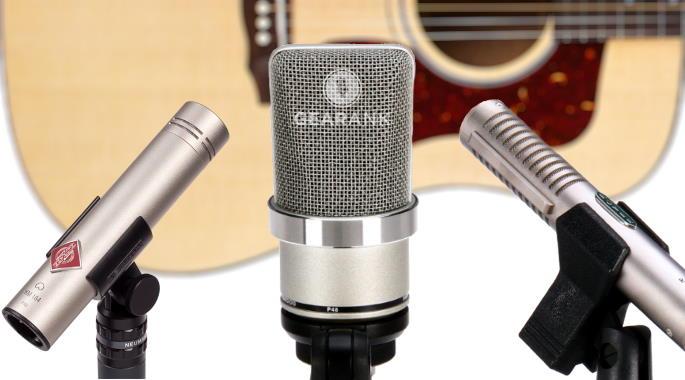
Author & Contributors
Raphael Pulgar
I've been an audio engineer for 20 years specializing in rock and metal recordings. I also play guitar and produce original music for my band and other content creators.
Best Small Diaphragm Condenser Mics for Recording Acoustic Guitar
Audio-Technica ATM450
Cons
- Slightly lacking low end
Pros
- Smooth and neutral sound signature
- Versatile - works with many sources
- Captured acoustic guitar tracks fit well in a mix
The Audio-Technica ATM450 is an affordable cardioid condenser mic designed specifically for high SPL (Sound Pressure Level) sources like drums, cymbals, amplifier cabinets and more, but it has enough sensitivity to capture the nuances of acoustics.
This sensitivity, coupled with its side address design, allows for different placement options.
The ATM450 features a built-in 80Hz hi-pass filter and a switchable 10dB pad.
I appreciate the ATM450 for its versatility especially with acoustic guitar capturing smooth sounding tracks that blend well with a full band mix. The side-address design also helps minimize bleed when recording guitars simultaneously with vocals.
One downside I find is that the low-end is slightly lacking, but this can be remedied by closer proximity or EQ.
If you're looking for a great, all-rounder microphone that records acoustic guitar with a bit of smoothness and neutrality, the ATM450 by Audio-Technica is a great pick.
Specifications
- Polar Pattern: Cardioid
- Frequency Response: 40Hz-18kHz
- Impedance:200 ohms
- Max SPL: 152dB
- Power Requirements: +48V
| Website | Source | *Rating Value |
| TapeOp | Chris Garges | 90/100 |
| AudioTechnology | Greg Walker | 92/100 |
Audio-Technica ATM450 Frequency Response and Polar Pattern Charts:
Shure SM81
Cons
- Does not have the same low frequency emphasis as large-diaphragm mics
Pros
- Transparent and clear tonality akin to premium tube amps
- Excellent SPL handling - from quiet to extremely loud sources
- Sound quality among the highest in its price class
- Lightweight and easy to position
The Shure SM81 is a cardioid condenser microphone that has a transparent and clear sound comparable to premium tube microphones.
Because of its small diaphragm design, the SM81 is lighter (1.63 lbs) and easier to position than most microphones of this design.
It handles loud sound sources handily with a max SPL (sound pressure level) of 136dB (146dB with the built-in Pad), and as such it captures the nuances of acoustic guitars much better - be it during loud strumming or when carefully fingerpicking. This also makes it capable of handling acoustic guitar amplifiers and other loud instruments.
The usual downside of small diaphragm mics is its lack of frequency response, but this doesn't seem to be very noticeable with the SM81. The SM81 gives you more sound quality per dollar than similarly priced microphones.
It's really hard to find fault with it, especially for acoustic guitars, other than its natural limitation of not having the same low frequency emphasis as large-diaphragm mics. The Shure SM81 is highly recommended for acoustic guitar and beyond.
Specifications
- Polar Pattern: Cardioid
- Frequency Response: 20Hz-20kHz
- Impedance: 150 ohms
- Max SPL: 136dB (146dB w/Pad)
- Power Requirements: +48V
| Website | Source | *Rating Value |
| Everything Audio Network | John Gatski | 90/100 |
| Tweakheadz Lab | Editor | 96/100 |
Shure SM81 Frequency Response Chart:
Shure SM81 Polar Pattern Chart:
Neumann KM 184
Cons
- Priced at a premium
Pros
- Works great in a matched stereo pair
- Minimal off-axis coloration
- Famed Neumann build quality and feel
- High sensitivity rivaling large-diaphragm mics
The Neumann KM 184 is a pencil style small-diaphragm condenser that can rival the sensitivity of large-diaphragm mics, while retaining high SPL handling.
It has a frequency range of 20Hz to 20kHz, which is similar to large-diaphragm mics, and this allows for highly detailed sound capture that I certainly appreciate.
Another great feature is its minimal off-axis coloration - great for recording acoustic guitars with a matched pair in an x-y or near-coincident formation.
As expected from Neumann, this mic has premium build quality and feel. High input gain proved to be no problem with its supremely quiet operation. It works stunningly well with acoustic guitars especially with stereo miking techniques.
As an added bonus, it also makes quick work of orchestral instruments, hi-hats, cymbals, and even choirs. Some even go so far as to claim that the Neumann KM184 is the best pencil style condenser microphone, and we understand where they are coming from, especially when most who have used this mic would agree as you can see from the high ratings it gets.
There shouldn't be anything holding you back from getting this mic other than the price, but those who wisely invest in the Neumann KM 184 will be more than satisfied with what they get.
Not just great for single miking, Neumann has hit a home run for Stereo Recording with the KM 184. Its phase integrity and tolerance are its best selling points as using a matched pair makes for great sounding acoustic guitar recordings in stereo.
Specifications
- Polar Pattern: Cardioid
- Frequency Response: 20Hz-20kHz
- Impedance: 50 ohms
- Max SPL:138dB
- Power Requirements: +48V
| Website | Source | *Rating Value |
| Gearspace | jnorman | 100/100 |
| Frary Guitar | Peter Kun Frary | 98/100 |
Neumann KM 184 Frequency Response and Polar Pattern Charts:
Budget Small Diaphragm Condenser
Shure PGA181
Cons
- A bit heavy - a sturdy mic stand is recommended
Pros
- Captures a nice balance of voice and guitar when playing while singing
- Swiss army knife versatility
The Shure PGA181 is a versatile, side address mic with a frequency response that complements a wide variety of sound sources.
Design-wise it is unlike the usual small diaphragm "pencil" form factor. Instead, it uses a side-address design more common with large diaphragm condensers. This gives the mic positioning options more similar to large diaphragm condensers.
The PGA181 is hailed as a "Jack of all trades". On acoustic guitar specifically, the sound is best suited for capturing near the bridge or near the neck joint and helps tighten up big bodied acoustic guitars. For single mic use along with singing, it captures a nice balance between instrument and vocals.
The mic is a bit heavy, able to tip some mic stands over. To address this, we recommend using a solid Mic Stand.
The PGA181 is a versatile microphone that you can use for both your acoustic guitar and vocals (as well as other instruments). Get it if you want a great do-it-all mic at
this price.
Specifications
- Polar Pattern: Cardioid
- Frequency Response: 50Hz-20kHz
- Impedance:120 ohms
- Max SPL: 138 dB
- Power Requirements: +48V
| Website | Source | *Rating Value |
| Mix | Steve La Cerra | 93/100 |
| MusicRadar | Tom Bradley | 100/100 |
Shure PGA181 Frequency Response and Polar Pattern Charts:
Best Large Diaphragm Condenser Mics for Recording Acoustic Guitar
Aston Microphones Origin
Cons
- Relatively high noise floor
- Might be too thin for deeper voices
- Direct mount limits mic positions
Pros
- Very articulate midrange
- Smooth high frequency
- Great overall for rock and pop singing
- Solidly built
While on the lookout for a new microphone to upgrade my studio with, I came across the Aston Origin. At first I thought it was a boutique microphone. Its waveform mesh and industrial design brought to mind boutique mics like those from Brauner. I was surprised to find that not only was the Aston Origin affordable, It was also critically acclaimed by experts and hobbyists alike. After being impressed by demos, I got one for myself.
The mic has a very brutalist-like aesthetic with the unpainted body sporting a special "tumbled" finish achieved by letting the enclosure mix around a chamber with ceramic pellets. The waveform head is the undulating structure visible on the outside of the mic and protects the dual layer steel mesh that also serves as a pop filter.

The headbasket of the Aston Origin is anything but traditional. Not only does it serve as a pop filter, the spring-like structure protects the capsule from bumps and tumbles.
Inside the Origin is an internal shockmount for the capsule. This prevents the mic from picking up excess vibrations from mic stands and low frequency rumble from sound sources. Being internally shockmounted, the mic is free from excess resonance that plagues many mics at this price point. This also enables direct mounting on mic stands with the bottom of the mic having a threaded slot along with an adapter. For those looking for a more traditional setup with a shockmount, Aston offers a packaged version in black with a shock mount and pop filter.
I can describe the sound of the Origin as "mid forward" with slightly less low frequencies than most mics (even without the 80hz filter). It is a very detail oriented mic that captures nuances that most mics at this price point smear or obscure.
The upper mid presence is rich and not harsh with a slight bump in the treble frequencies. I was afraid that sibilance would be an issue but thankfully, the Origin's smooth high frequencies took care of any that would have arisen my entire time using it.
With this forward sound signature, the Origin reminds me of another British-made audio device: Marshall Amplifiers. Like them, the Origin has an aggressive midrange that cuts through the mix with no effort with just enough warmth to keep it from sounding harsh or anemic. Vocals recorded on the Origin stand out in a mix with very little effort, making it perfect for busy rock or metal mixes.
This odd looking microphone has made its way into home studios around the world for its neutral sound signature with just the right amount of harmonic content to flatter most voices. It's an excellent vocal mic for nearly any sound source you can throw at it. Deeper voices might find that the low frequencies aren't as accentuated and thus, would make their voices sound a bit thinner. Nevertheless, the Origin is a great all-rounder that punches well above its price point.
| Website | Source | *Rating Value |
| Gearank | Raphael Pulgar | 94/100 |
| MusicRadar | Robbie Stamp | 90/100 |
Aston Microphones Origin Frequency Response and Polar Pattern Charts:

Lewitt LCT 440 Pure
Cons
- Cardioid only
- Can get sibilant
Pros
- Neutral midrange with a silky smooth high end usually only heard on ultra-expensive microphones
- High quality bundled accessories
- Low self-noise makes it great for recording quiet sources and room tone
- Excellent for acoustic guitar or anything where detail and brightness are desired
I have a confession to make: I am addicted to microphones.
I love hearing the differences between different mics and how they capture voices and instruments. I've had the pleasure of mixing tracks recorded with some of the most expensive mics in the world and it doesn't help curb this obsession of hearing the subtle differences between a Neumann U47 and an AKG C12.
For those who aren't attuned to the subtle, almost inconsequential differences between the highest tier microphones, it's often enough to get a microphone that just makes your production process easier; something that you can just put in front of a singer or a guitar cab, hit record and have a great sound.
The demand for a more affordable, project studio oriented product from Lewitt saw the release of the LCT 440 Pure. A distillation of their design philosophy into only the most essential pieces. The 440 Pure is a cardioid only LDC with no other features. On paper, this might not sound like much to offer, but the mic comes in an attractive package of both a shock mount, and 2 pop filters (foam and metal mesh).
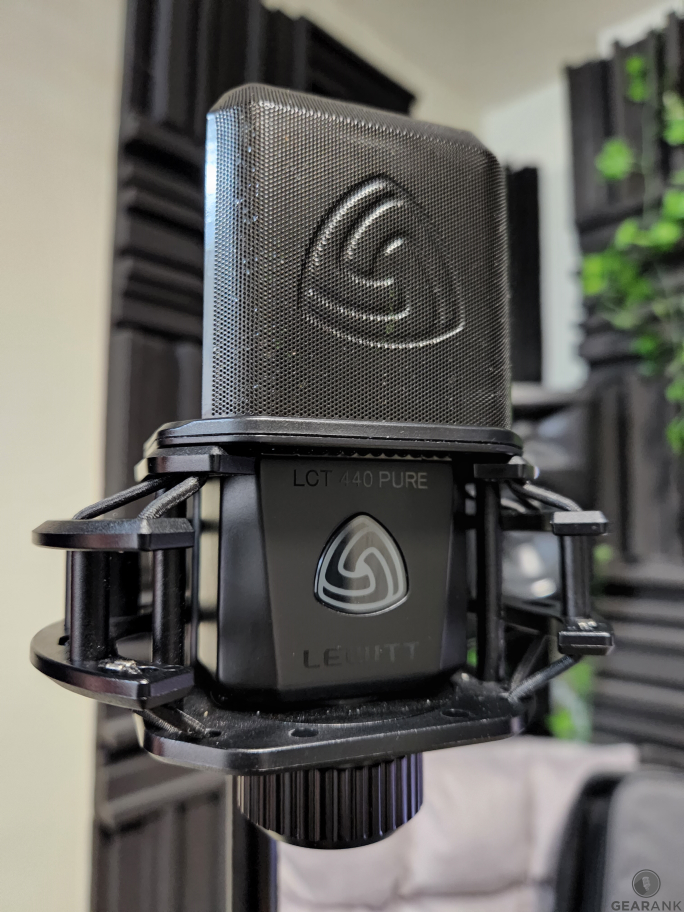
The included pop filter secures to the shockmount with magnets and doesn't obscure the singer or speaker's vision.
Because of the streamlined approach to the mic, price is kept low while the capsule, enclosure and circuitry remain top standard.
That's the design philosophy behind the LCT 440 Pure according to Lewitt. It employs the same capsule as their flagship microphones but distilled into a simple, single pattern mic. The result is surprisingly versatile especially with a max SPL handling of 140dB SPL for 0.5% THD, it won't need a pad at all for some cases.
It definitely sounds different from other mics in its class like the Aston Origin and Rode NT1. With so many glowing reviews for it, I was surprised that no one has made the comparison to top-tier, very expensive microphones yet.
It has a neutral midrange with a sweet, airy high end that you can only get from classics like the Telefunken ELA M 251e and the Sony C800g (with some examples of the 251e having slightly more harmonically rich low mids vs the c800g). I have been fortunate enough to record audio with these mics and I can easily say the 440 Pure shares the same "pop vocal" sheen that the aforementioned mics offer. What it lacks compared to these mics is the subtle harmonic content that gives a feeling of "compression" on specific frequency ranges.
I should point out that the mic is a bit sibilant; a trait it shares with the two expensive mics I keep mentioning. If you're looking for Neumann smoothness, look elsewhere as the LCT440 Pure has a very modern and airy sound designed to cut through in a modern pop mix. Likewise, if you're in the market for a mic that has multiple patterns and pads, Lewitt's higher end models begin to introduce those features so check those out.
On the other hand, where sibilance might be a problem for some singers, the added treble air works wonderfully with acoustic guitars, especially darker sounding ones. My acoustic is a very dark sounding parlor by Tyma and I've always had trouble recording it because it gets boomy if I play it too energetically. The Lewitt shifts focus into the more delicate treble registers of the guitar without muddying up the low midrange. This makes it excellent for both solo acoustic recordings or recordings that are meant to fit in larger mixes and compositions.
If you're looking for an excellent bright condenser to capture nuanced acoustic guitar performances, the LCT 440 Pure definitely brings that big studio sound without the big studio price.
Specifications
- Type: Condenser
- Polar Pattern: Cardioid
- Frequency Response: 20 to 20,000 Hz
- Impedance: 110 ohms
- Max SPL: 140 dB
- Applications: Great all-rounder from vocals, acoustic guitar to drums
- Power Requirements: 48 V ± 4 V
| Website | Source | *Rating Value |
| Recording Magazine | Paul Vnuk Jr. | 98/100 |
| Gearank | Raphael Pulgar | 96/100 |
Lewitt LCT 440 Pure Polar Pattern and Frequency Response Charts
Budget Large Diaphragm Condenser
MXL 770
Cons
- Capsule smaller than other large diaphragm microphones - doesn't quite capture the lowest of frequencies
- Relatively high self noise
Pros
- Not brittle sounding like most condensers in the price range
- Versatile and feature rich (pad and bass cut switch)
- Comes with a carry case and shockmount
While promotional material notes the MXL 770 to be a Small Diaphragm mic, the 0.87" capsule is closer to the usual 1" measurement of Large Diaphragm microphones, so we classify it as either large or medium, but definitely not small.
Nevertheless the MXL 770 is a multi-purpose condenser microphone designed to suit a variety of recording situations at an affordable price.
Internally, it features a a 6-micron, 20-mm gold-sputtered diaphragm. and a transformerless FET preamp design with wiring made by cable giant Mogami.
Cheap condensers usually have a harsh top end to compensate for the lack of harmonic richness in those frequencies. The MXL 770 does not artificially boost the high end on recordings, making it a surprisingly smooth sounding microphone. At this price point, it is rare for a condenser to not have that brittle high end.
One niggle is its signal to noise ratio of 74 dB which is adequate for most situations but can be lacking for the most intimate and softest of acoustic guitar performances. Still, the MXL 770 continues to be one of the best value condenser mics in the market today.
If you are on a budget and you need a good do-all mic, the MXL 770 is a safe choice.
Specifications
- Polar Pattern: Cardioid
- Frequency Response: 30Hz-20kHz
- Impedance:150 ohms
- Max SPL:137 dB
- Power Requirements: +48V
| Website | Source | *Rating Value |
| Synaptic Sound | Editor | 95/100 |
| YouTube | Audio Hotline | 96/100 |
MXL 770 Frequency Response and Polar Pattern Charts:
Best Dynamic Mics for Recording Acoustic Guitar
Shure SM57
Cons
- Not for delicate sounding sources
- Needs foam filter to avoid vocal plosives
Pros
- Extremely versatile
- Great frequency response for various sources
- Amazing long term durability and ruggedness
- High SPL handling
When I first started out with building my recording setup years ago, I had a only a few things on my wishlist: A Mac, a Focusrite interface and a Shure SM57. It's the one mic that every audio engineer I've encountered and interacted with told me to get first. I was told that it can record anything from drums to vocals to acoustic guitar. Eventually I would expand my mic collection but I always have a use for the Shure SM57.
The Shure SM57 was developed in 1959 by Ernie Seeler. Seeler actually despised rock music and hoped the mic would be used for orchestras. In a stroke of irony, the SM57 went on to be one of the mainstays of rock music thanks to its high SPL handling, frequency response and long term durability. The mic can also be seen gracing US Presidential podiums paired with the Shure A81WS foam windscreen.

The Shure A81WS foam windscreen paired with the SM57 is the configuration most often seen on US Presidential podiums. Pardon the cat fur; it's an old mic.
"SM" Stands for (TV) Studio Microphone. Despite its initial development for TV, the SM57 is able to record almost anything in the studio save for the most quiet sound sources that require absolute detail. It excels in handling electric guitar, drums and aggressive screamed vocals (with a pop filter or foam windscreen).
The SM57 is versatile enough to be used on acoustic guitars. Instead of miking from a distance like you would a condenser, the SM57 sounds best when pointed closer to the guitar. This results in a recording with lots of attack and punch. It is perfect for tracks where the acoustic guitar is layered in rather than as a solo acoustic track.
What I don't like about the SM57 is how hit or miss it is with sung vocals. Some singers sound great on it without much work while others sound brittle. It's this single inconsistency that I find makes me reach for a good condenser microphone. Another is that it's not the best mic for spoken word or podcasts. That task is better suited to the Shure SM7b which has a bit more detail and low end extension. But at nearly 4 times the price, the SM7b is only marginally better than the 57 in a lot of other aspects.
All in all, I echo the words of my mentors in saying that EVERY studio has to have at least one SM57.
One final note, the SM57, along with the SM58, are two of the most counterfeited microphones in the market. Be sure to get yours from a reputable seller or retailer. The counterfeits do not sound remotely close to the originals despite many looking very convincing.
Check out my extended review for sound samples and more photos.
Specifications
- Polar Pattern: Cardioid
- Frequency Response:40Hz-15kHz
- Impedance: 310 ohms
- Max SPL: 149 dB
| Website | Source | *Rating Value |
| Gearspace | Salivan | 90/100 |
| Audiofanzine | JeffTadashi | 100/100 |
Shure SM57 Frequency Response and Polar Pattern Charts:

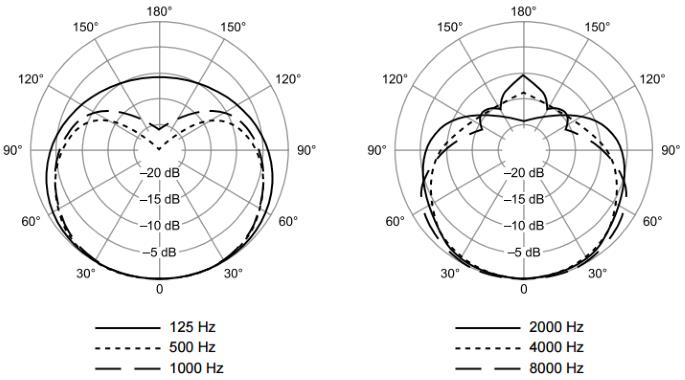
Sennheiser MD 421-II
Cons
- Poorly designed mic clip
Pros
- Captures low notes of acoustic guitar with richness and smoothness
- Large diaphragm captures nuances better than other dynamic mics
- Excellent for rhythm guitar
Although designed with loud sound sources in mind, the Sennheiser MD 421-II's large capsule (for a dynamic mic) enables it to capture nuances better than most dynamic mics. While the SM57 dynamic mic emphasizes percussiveness, the MD 421-II has a richer and smoother sound which brings out the bass strings more on acoustic guitars.
The MD 421-II works well with playing styles involving a lot of low string plucks. The mic adds girth to to larger bodied acoustics and fattens up smaller, thinner sounding instruments.
Rhythmic techniques like body taps are also accentuated, making a convincing kickdrum-like thump to these styles.
Something I rather dislike is the MD 421-II's mic clip design. There are third party accessories that address this but do note that any modifications done to the mic will void the warranty.
For rhythmic guitar playing as popularized by players like Andy McKee, the MD 421-II is sure to add some thump to your performances. The mic's frequency response also adds body to smaller acoustic guitars.
Specifications
- Polar Pattern: Cardioid
- Frequency Response: 30Hz-17kHz
- Impedance: 200 ohms
- Max SPL: 160 dB
- Power Requirements: +48V
| Website | Source | *Rating Value |
| Gearspace | Onan | 85/100 |
| Audiofanzine | stompboxjon | 80/100 |
Sennheiser MD 421-II Frequency Response chart:
Best Ribbon Mic for Recording Acoustic Guitar
Royer R-121 Ribbon Microphone
Cons
- Pricey for some
- Captures a lot of ambience - may not be great for home studios
Pros
- Makes acoustic guitar sound natural and in the room
- Captures fine details of high frequency sounds - great for fingerpicking and strumming
- High max SPL - can be used for loud acoustic instruments
Rounding out our list of recommendations is the Royer R-121 Ribbon microphone.
The ability of Ribbon Mics to capture ambience may not be a good thing for some home studios, but I find this feature important especially when injecting life and soul to a track. This "open" sound makes it ideal for acoustic guitars, resulting in professional quality and natural sounding recordings.
The R-121 has excellent sound and build quality, its premium price tag is truly justified surpassing my expectations.
The mic's ability to reproduce fine details of high frequency sounds make this one ideal for fingerpickers and strummers alike - even John Mayer was spotted using this mic on one of his YouTube live performance videos. And since it comes with a genuine Ribbon design with max SPL of 135dB, it can be used to capture high SPL sources like guitar amps, trumpets and other loud instruments. The frequency response is a bit different compared to conventional microphones at 30Hz-15kHz so be sure to keep this in mind when buying this mic. Weight is fairly standard at 0.54lbs so positioning is easy.
The price is steep for some, but a ribbon microphone of this caliber is worth it if you can afford one.
Ready for a top-tier mic for your acoustic guitar recordings? The Royer R-121 is ubiquitous in big studios for a reason: it's an amazing microphone that makes acoustic guitars sound natural and "in the room" thanks to its ribbon mic design.
Specifications
- Polar Pattern: Figure-8
- Frequency Response: 30Hz-15kHz
- Impedance: 300 ohms
- Max SPL: 135dB (20Hz)
- Power Requirements: +48V
| Website | Source | *Rating Value |
| Gearspace | guitarz | 95/100 |
| Sound On Sound | Hugh Robjohns | 96/100 |
Royer R-121 Frequency Response and Polar Pattern Charts:
Things to Consider When Buying an Acoustic Guitar Mic
-
Since acoustic guitars produce similar frequencies to vocals, large diaphragm condenser microphones work great with them. These are widely available and versatile, making them a practical option, ideal for first timers and those working to a budget. The only downside would be the size especially for models with a shockmount. Removing the shock mount may be a hassle if it's your only mic for both acoustic guitar and vocals. Keeping it on for acoustic guitar may limit your positioning options.
Small diaphragm condenser mics and ribbon mics, with their high frequency response and high SPL capabilities, work considerably well with the acoustic guitar's inherent treble emphasis and varying dynamics. As such they remain to be the professional's choice when Recording Acoustic Guitar, as evidenced by their presence in many performance stages and recording studios. While they are not advisable for for use as an all-around mic, they are ideal extra mics that can be used for acoustic guitars, miking other instruments and for adding space and realism to recordings. Small Diaphraghm mics tend to have more low frequency roll-off than their large diaphraghm counterparts which makes them more suited for use multi-miked recordings. A spaced pair with one pointed at the soundhole and one near the bridge can compensate for the low frequency loss as well as provide an option for more detail in strumming. Using X-Y or near-coincident mic patterns with small diaphragm condensers produces better stereo recordings than a spaced pair of large diaphragm condensers and are easier to position.
- Cardioid is the most common polar pattern used on mic designs, because of its simplicity and effectiveness. It is especially great for capturing single sound sources like acoustic instruments, where you just move the mic around to find the sweet spot and start capturing. Still, it won't hurt to have mics with multiple patterns because they can be useful for other purposes, like when capturing multiple instruments that play simultaneously. Do take note that different mics may have the same polar patern but have different sensitivities at varying degrees of capture. Some may be suited for miking directly in front while others are better for capturing the room.
- Pads allow microphones to better handle loud sound sources, especially when positioned up close. And since volume and dynamics vary from player to player, mics with pads allow for easy compatibility and positioning.
- These days, most condenser mics are built like tanks with tough metal exteriors, but it still pays to check the specs and pictures to see if the mic is solid. This is important because miking acoustic guitars require a bit more repositioning than when miking vocals, so there's always the tendency of bumping or falling off. As with all electronic devices, do handle with reasonable care.
Diaphragm
Polar Pattern
dB Pads
Reliability
Acoustic Guitar Mic Selection Methodology
The first Edition was published in 2016.
Our methodology for this guide is a bit different from most of the gear guides on Gearank.com. While our recommendations are usually based on product ratings, in this case we used a combination of professional judgement and ratings.
We created a short-list of 46 mics that we know from experience have properties that are well suited to recording acoustic guitars.
For this edition we ended up processing over 41,700 reviews, ratings and forum comments with the Gearank Algorithm to produce rating scores out of 100 for each mic. Our top picks were then sorted according to type for this guide. For more information about our methods see How Gearank Works.
About the Author and Contributors
Here are the key people and sources involved in this guide's production - click on linked names for information about their music industry backgrounds.
Lead Author & Researcher
Raphael Pulgar
I've been an audio engineer for 20 years specializing in rock and metal recordings. I also play guitar and produce original music for my band and other content creators.
Some of the recording gear I use in my studio includes the Focusrite Scarlett 18i20, Focusrite Scarlett Solo, Samson QH4 Headphone Amp and Cloudlifter CL-1. My mics include Aston Origin, Aston Element, Shure SM57, Rode NT1, Rode PodMic and MXL V67G.
Contributors
Alden Acosta: Supplemental writing.
Alexander Briones: Supplemental writing.
Jason Horton: Editing and Illustrating.
Media
Main/Top Image: Created by Gearank.com using photographs of the Neumann KM 184, Neumann TLM 102, Royer R-121 and Guild D-40.
The individual product images, frequency response charts and polar pattern charts were sourced from their respective manufacturers' websites, promotional materials or supporting documentation, except for the additional images of the Aston Origin, Lewitt LCT 440 Pure and Shure SM57 which were photographed by the author.




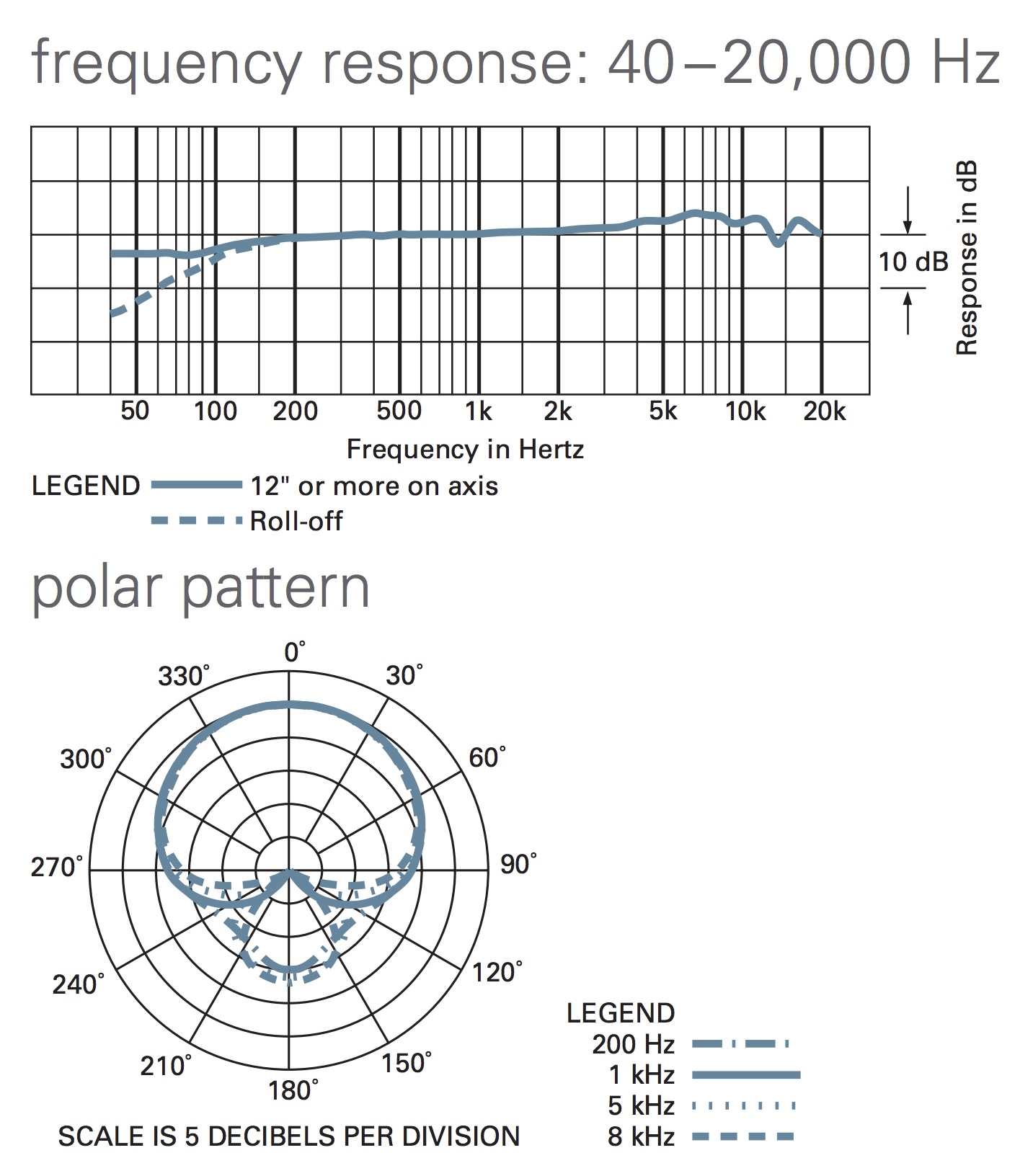
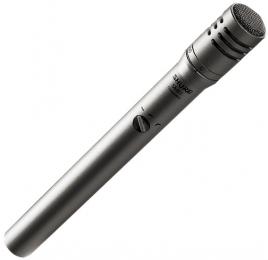
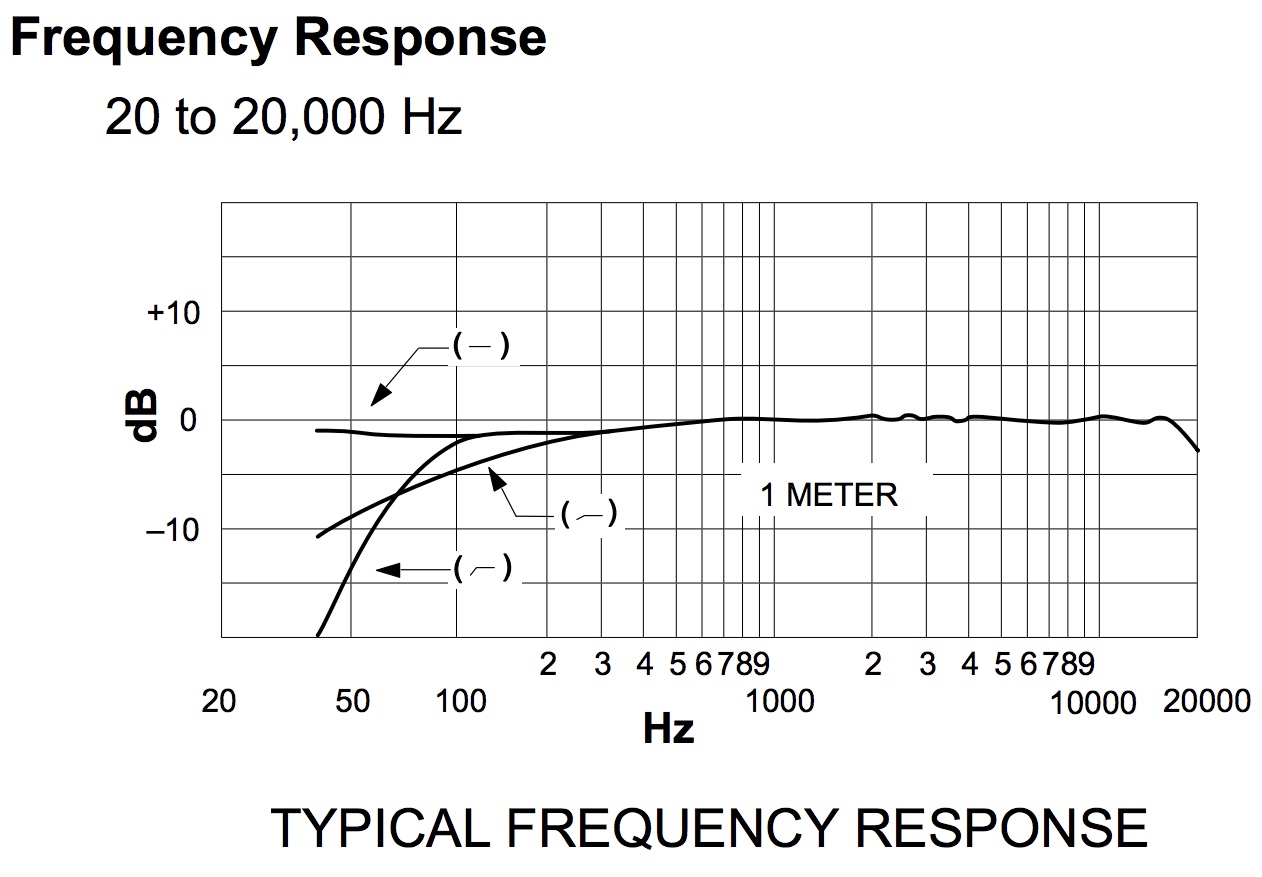
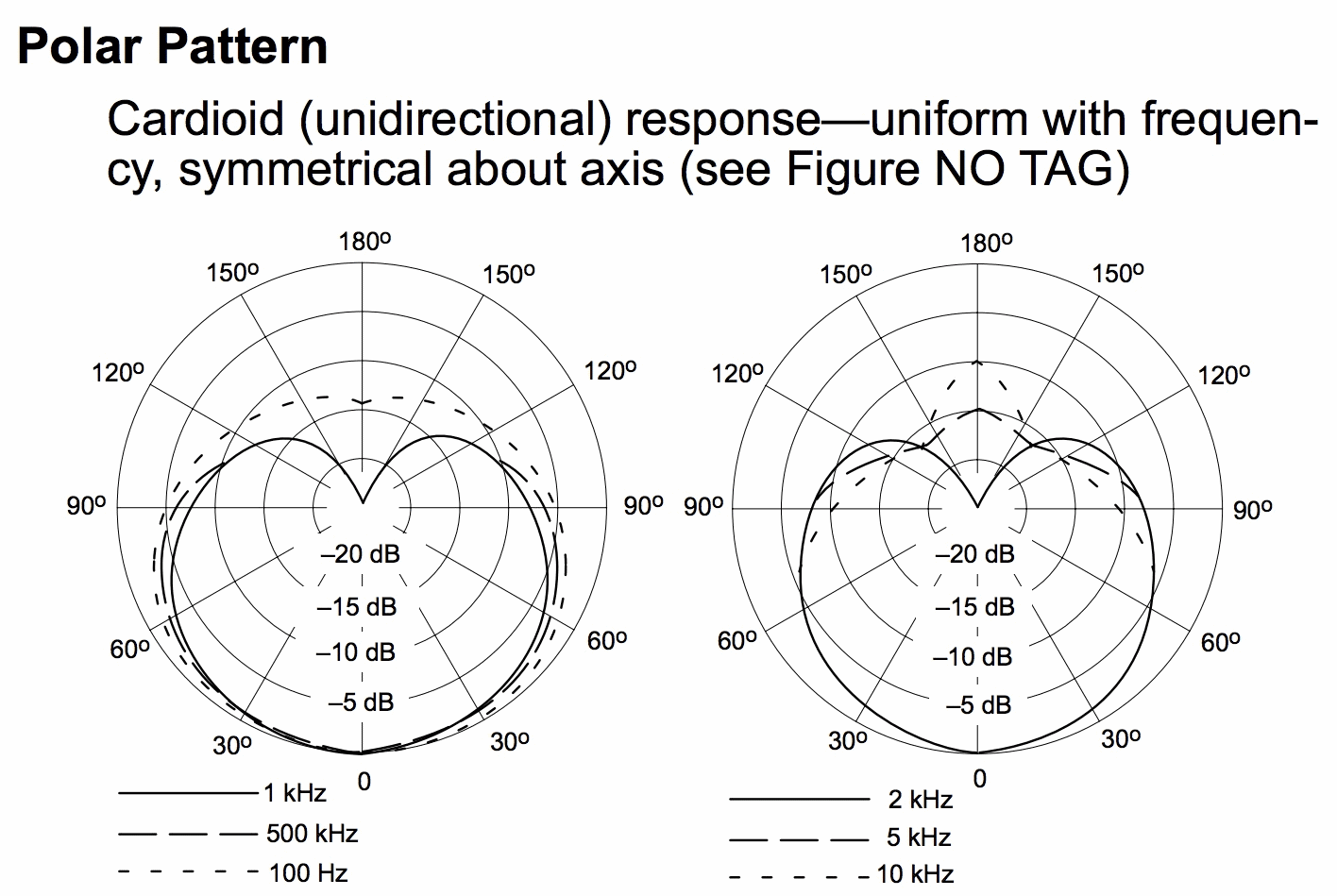
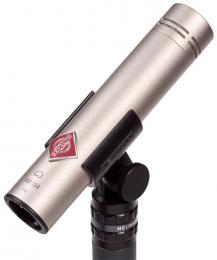


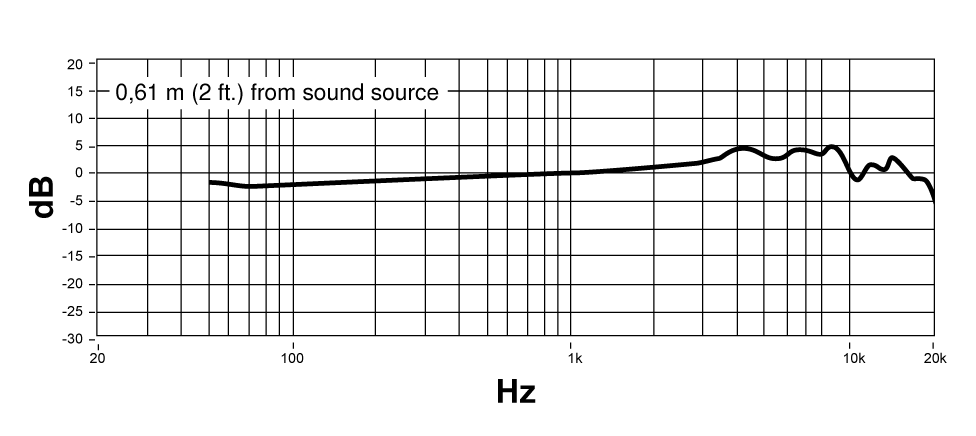
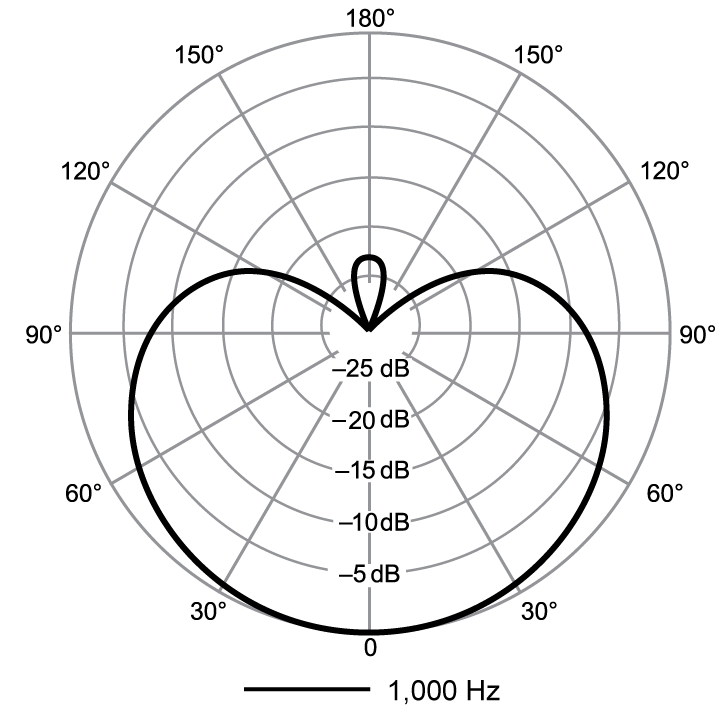
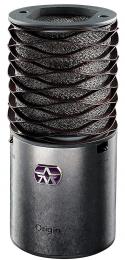
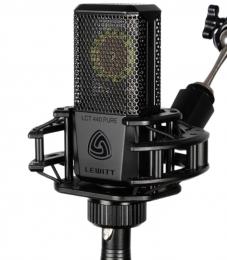





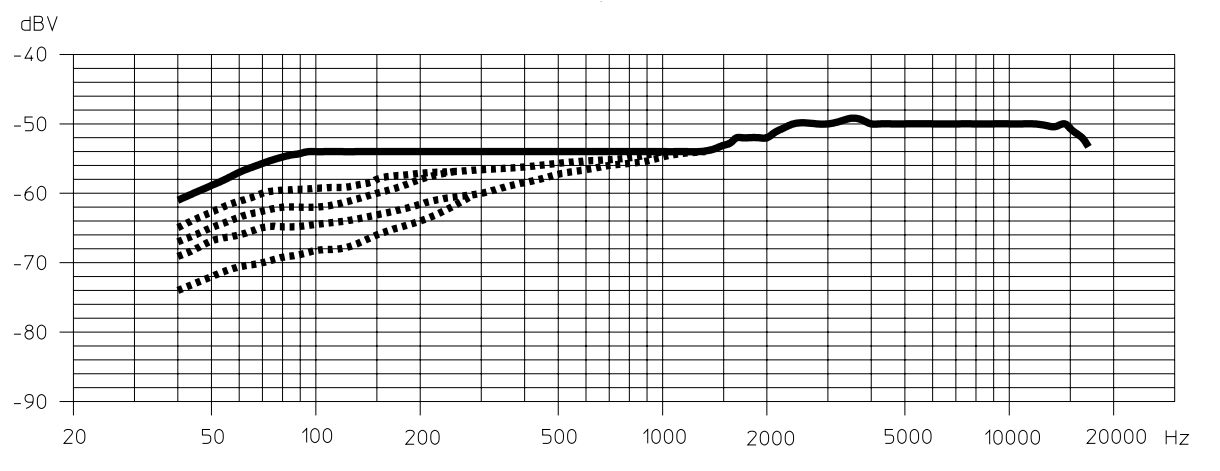

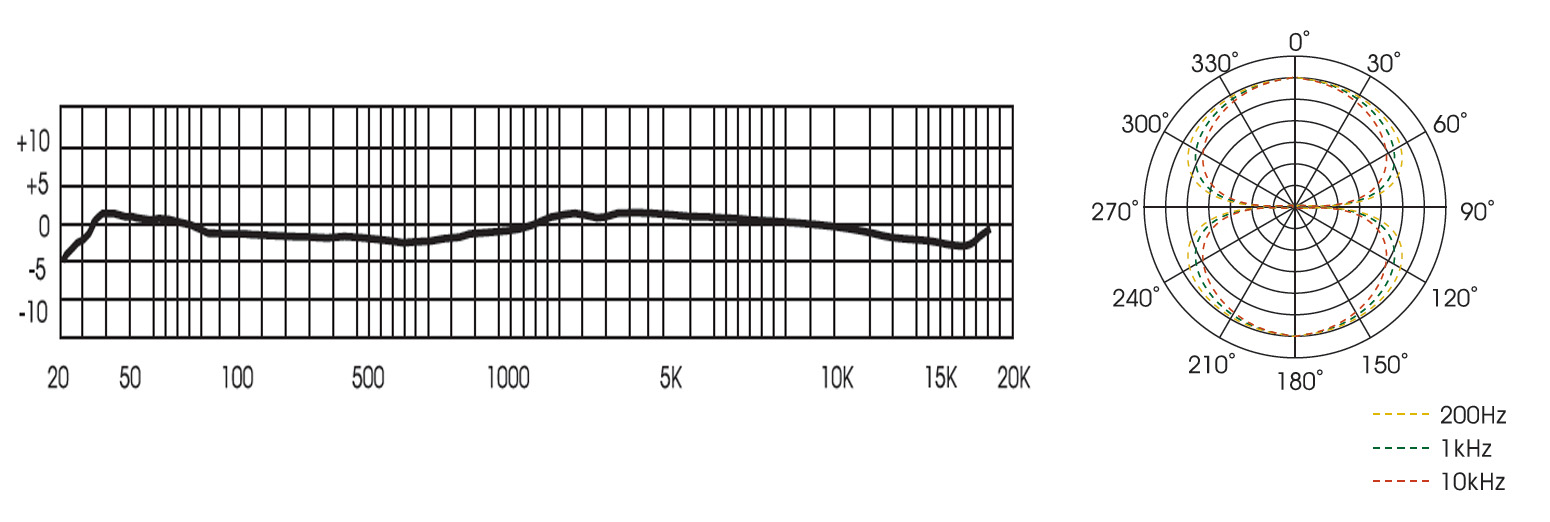
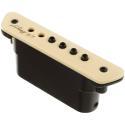
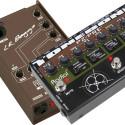
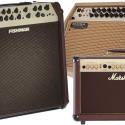
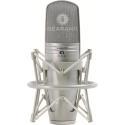
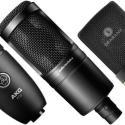
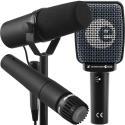
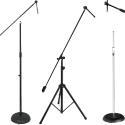
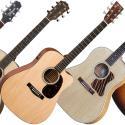
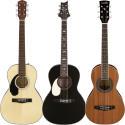

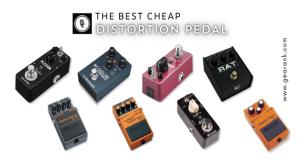

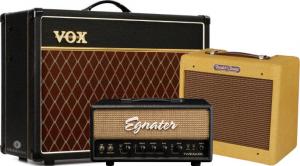
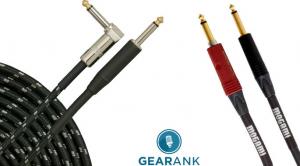
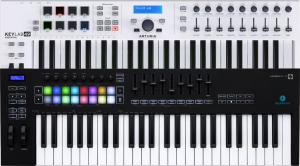
Comments
The following mics came off
Submitted by Jason Horton on
The following mics came off the recommended list above when we published our July 2022 Edition:
Thank you for the information
Submitted by Edwin (not verified) on
Thank you for the information
No 48V requirements for Shure
Submitted by cam (not verified) on
No 48V requirements for Shure SM57 dynamic mic
Thanks for pointing out that
Submitted by Jason Horton on
Thanks for pointing out that I made that mistake when editing this guide. I have now corrected the SM57 specifications.
The publication of our April
Submitted by Jason Horton on
The publication of our April 2021 edition resulted in the following mics coming off the recommended list above, but you can still see our analysis of them:
Why did you remove the Rode?
Submitted by Joustene (not verified) on
Why did you remove the Rode? I think it's a fantastic microphone for voice and acoustic guitar. I tried the Technica, but found that it failed the clarity test. I know other people will hear different things. But I would have Rode at the too of my list.
As a result of our March 2020
Submitted by Jason Horton on
As a result of our March 2020 update the following came off the recommended list above, but you can still see our analysis of them:
As a result of our July 2018
Submitted by Jason Horton on
As a result of our July 2018 update of this guide, the following microphones were removed from the recommended list above: